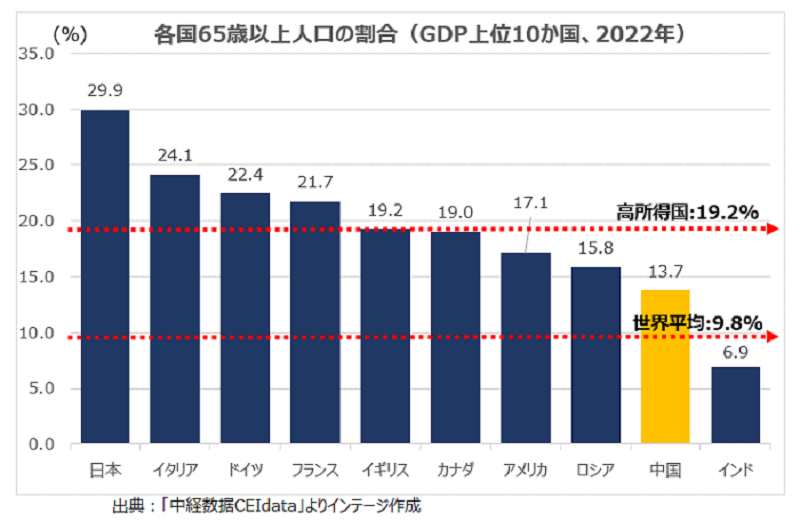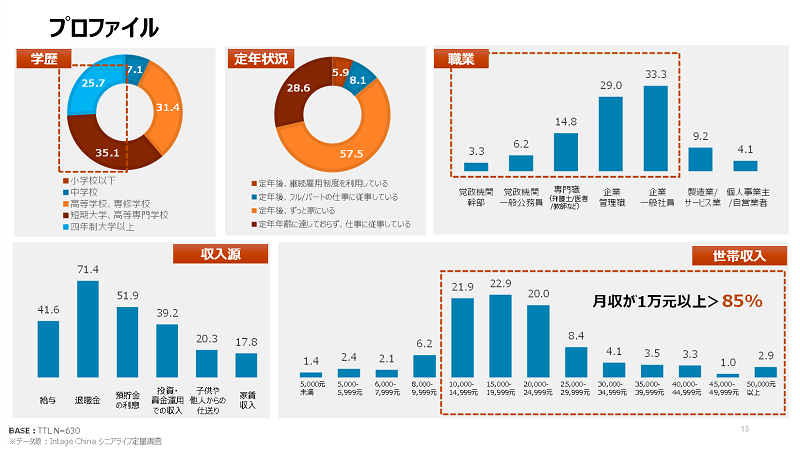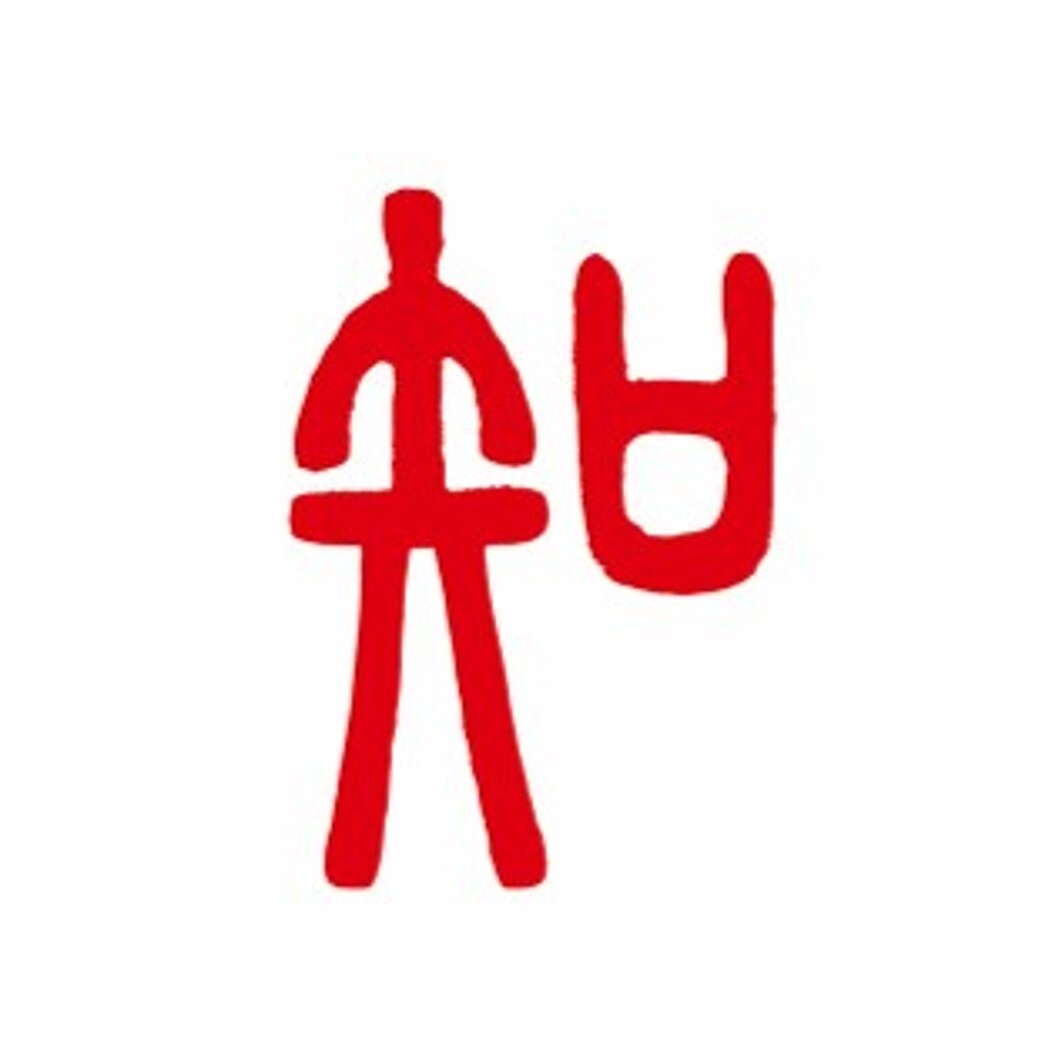Anticipating the lifestyle and consumption trends of China's new consumer demographic! Will China's silver-haired generation (silver market) become a blue ocean? (Part 1)
- Release date: Sep 20, 2024
- Update date: Aug 07, 2025
- 4009 Views
In this article, we will explore the question, “Will China's silver-haired population (silver market), which has been attracting attention in recent years, become a blue ocean?” We will examine four perspectives: the current state of the Chinese senior market, consumer insights, values, and the opportunities this presents for the market. We will explore these topics in two parts, a first part and a second part.
Current state of the senior market
The United Nations defines a society as “aging” when the proportion of people aged 65 or older exceeds 7%, and as “super-aging” when it exceeds 14%. China is on the verge of becoming a “super-aged society” with a rate of 13.7%, exceeding the global average of 9.8% (see figure below). Additionally, in China, the decline in birth rates and aging are progressing simultaneously, so it is projected that the proportion of the elderly population will exceed 20% by 2030.

As the aging population and declining birthrate accelerate, the consumption structure in the Chinese market has also changed. According to the National Bureau of Statistics, over the 10 years from 2013 to 2023, consumption of food, tobacco, alcohol, and clothing, which is centered on young people, has decreased. On the other hand, middle-aged and older people have increased their spending on their children's education, and the elderly have increased their spending on medical care and health maintenance.
China's senior market has grown rapidly over the past five years and now accounts for more than 6% of GDP. It is expected to reach approximately 30 trillion yuan by 2035, making it a market with tremendous potential. Against the backdrop of growing demand among the elderly for improved quality of life, the government has announced a policy to focus on the diverse needs of the senior population and nurture this market as a potential industry.
※Senior market: Economic activities aimed at providing products and services to the senior generation and preparing for old age. Specific sectors include healthcare and health services, household assistance services, daily necessities, insurance, financial asset management, travel and entertainment, real estate, education, and consulting services.
The definition of the senior population varies depending on the statistical platform, but the senior population we are focusing on in this article is the new senior population born between 1955 and 1974 (currently aged 50 to 69) who are highly educated and enthusiastic about their hobbies and interests. China experienced three baby booms with a dramatic increase in the number of births, with the second peak lasting from 1965 to 1975. This was China's largest birth cohort and had the most significant impact on the subsequent economy. Those born during this period are now in their 50s and are nearing retirement age. The population size of this age group exceeds 20% of the total population.
Consumer insights among senior citizens
In order to gain consumer insight, it is first necessary to understand the characteristics of the new senior demographic.
◆profile

The educational background of the new senior population shows that 60% have attended junior college or university, indicating a high level of education. Even after retirement, approximately 40% of the new senior generation continue to work through re-employment or new job opportunities. Before retirement, the most common occupations were in government agencies or jobs requiring high levels of specialization and skills. Post-retirement income includes pensions, investments, and rental income. Over 85% of households have an income exceeding 10,000 yuan, making the new senior generation a generation with both time and money.
◆How to spend your free time
Looking at how they spend their free time, light exercise such as walking, jogging, and tai chi is most common. There are also differences depending on gender and city. New seniors in second-tier cities tend to spend more time at home watching videos or TV, while seniors in new first-tier cities tend to meet friends, eat out, and enjoy outdoor activities. The term “low-head tribe” (those who constantly look down at their phones), or “smartphone addiction” in Japanese, is now also applied to the new senior generation, with an average daily video viewing time of 1.5 hours. Hobbies like fishing and photography, which require both time and money, have already become part of the new senior generation's lifestyle, providing them with a sense of fulfillment and achievement. Furthermore, the concept of “monetizing knowledge” is gradually being accepted by the new senior population, making them a new target market for paid learning services. Regarding social media, in addition to sharing information, many people have also earned money by creating original content.
(Paid learning services market: Learning programs for the elderly, such as traditional Chinese painting, dance, fitness, piano, cooking, pottery, and traditional Chinese medicine health management at universities and schools.)
Looking at the types and number of apps used daily, it is clear that the new senior generation has already entered the all-digital era. The top four apps used daily are “WeChat,” “Douyin (Chinese version of TikTok),” “●●● (Today's News),” and “Taobao,” which cover social media, entertainment, news, and shopping.
The new senior demographic is also highly active. The average number of trips taken over the past year was an impressive 5.9. Popular destinations include domestic tourist spots and nearby courses. For overseas travel, trips to Asia, such as Japan, Thailand, and Singapore, are common. Travel is no longer simply about experiencing natural scenery, history, and culture; it has evolved into a combination of travel plus health, wellness, and hobbies, which is the true meaning of travel. Health-conscious travel and leisure activities are popular among the new senior demographic, regardless of the season. Examples include health retreats (health facilities or summer resorts) to summer resorts like Kunming, Chengdu, Xiamen, and Qingdao, rural homestay experiences, and health-focused trips. Additionally, activities popular among younger generations, such as theme parks, hiking, and camping, are also favored. Furthermore, the new senior demographic tends to spend generously on travel. Over half of the new senior demographic spend over 10,000 yuan on travel annually, and over 20% of the new senior demographic in first-tier cities spend over 20,000 yuan annually. When asked about future travel intentions, over 95% of respondents indicated they wish to maintain current expenses or increase both the frequency and cost of travel.
In Part 1, we introduced the current state of the Chinese senior market and consumer insights (profiles, how they spend their free time, and their enthusiasm for activities such as travel).
In Part 2, we will introduce consumer insights regarding health, appearance care, and purchasing behavior, as well as their values.
-

Author profile
Intage China Independent Research Team
A team composed of young researchers at Intage China.
Intage China conducts several independently planned surveys each year to train young researchers and disseminate information to the outside world. The column article written this time is also a masterpiece compiled by young researchers, who took the lead in gathering information and conducting independent surveys. -

Editor profile
Intage.inc
***
 Global Market Surfer
Global Market Surfer CLP
CLP